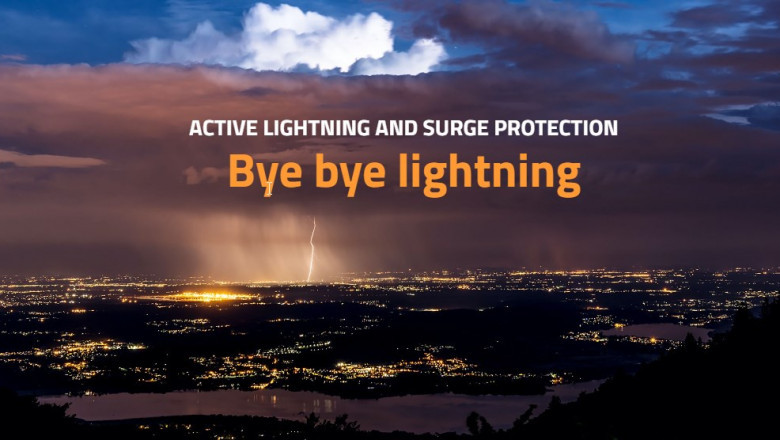views
Introduction
Lightning is one of nature’s most powerful and unpredictable forces, capable of causing extensive damage to buildings, infrastructure, and even human lives. A single lightning strike can result in fires, structural damage, and costly electronic failures. This is why having a lightning protection system (LPS) is not just a precaution but a necessity for every building.
The Dangers of Lightning Strikes
Lightning strikes can cause various forms of damage, including:
-
Fire Hazards: Lightning can ignite building materials, leading to devastating fires.
-
Structural Damage: The intense heat and energy from a lightning strike can weaken walls, roofs, and foundations.
-
Electrical Surges: A direct strike or a nearby hit can send powerful electrical surges through wiring systems, damaging appliances and electronics.
-
Safety Risks: People inside an unprotected building are at risk of serious injury or even death due to indirect lightning effects.
How a Lightning Protection System Works
A properly installed LPS mitigates the risks associated with lightning by safely directing electrical discharges to the ground. The main components of an LPS include:
-
Air Terminals (Lightning Rods): These rods intercept lightning strikes and guide the energy downward.
-
Conductors: These metal cables connect the air terminals to the grounding system, safely channeling the electricity away from the building.
-
Grounding System: This disperses the electrical energy safely into the earth, preventing damage to the building.
-
Surge Protection Devices (SPDs): These protect electrical systems and sensitive equipment from voltage surges caused by lightning.
Benefits of Installing a Lightning Protection System
1. Prevents Fires and Structural Damage
By safely directing lightning to the ground, an LPS reduces the risk of fires and damage to the building’s structure.
2. Protects Electrical and Electronic Equipment
Sensitive electronics such as computers, communication devices, and security systems remain safe from sudden power surges.
3. Enhances Safety for Occupants
A well-designed LPS minimizes the risk of injury or fatalities caused by lightning strikes.
4. Reduces Financial Losses
With an LPS in place, businesses and homeowners avoid costly repairs, replacements, and downtime caused by lightning-related damages.
5. Ensures Compliance with Safety Regulations
Many local and national building codes require lightning protection systems for certain types of structures, such as high-rise buildings, hospitals, and industrial facilities.
Industries That Benefit Most from Lightning Protection
While every building can benefit from an LPS, some sectors have a higher need for protection, including:
-
Hospitals and Healthcare Facilities: Ensuring uninterrupted power supply for critical medical equipment.
-
Data Centers and IT Infrastructure: Protecting servers and sensitive electronic systems from surges.
-
Factories and Industrial Sites: Preventing fire hazards in manufacturing plants with flammable materials.
-
Schools and Public Buildings: Ensuring the safety of large groups of people in community spaces.
Conclusion
Lightning protection is an essential investment for any building, safeguarding lives, infrastructure, and valuable equipment from unpredictable lightning strikes. By installing a marine lightning protection, property owners can significantly reduce risks, prevent costly damages, and ensure compliance with safety regulations. Don’t wait for disaster to strike—protect your building today with a reliable LPS.














Comments
0 comment